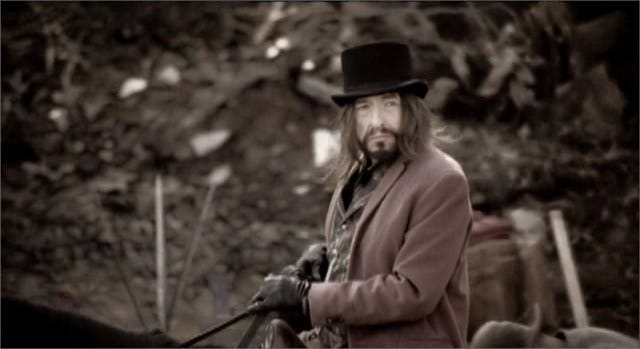The Grandfather of Rough & Rowdy Ways (Dylanology 29)
Harmonic niceties and minimalist uneventfulness in "Cross the Green Mountain", the Civil War ballad that started Dylan's experimentation with form in the 21 century
The greatest mystery about Bob Dylan as a musician is that on the one hand his music is seemingly both simple and banal, and consciously unpretty, unappealing. In the years since the turn of the century, he also seems to have accentuated precisely these tendencies further in his songs and recordings: the simplicity will at times come to resemble uneventfulness, and his eighty-years-old voice has not become less unappealing over the years.
And yet on the other hand, Dylan is highly appreciated both by the audience and by his musicians.
How strong this appreciation is, can be seen in Ray Padgett’s recent book Pledging My Time, a collection of interviews with musicians who have played with Dylan. They all express the same deep respect for Dylan, not only as a cultural icon and a brilliant lyricist who wrote some time-changing songs back in the day, but precisely as a musician, here and now.
I will try to follow these themes through what seems to be a highly conscious work with strophic forms, which goes way beyond the conventional verse–refrain structures that has always been the backbone of his work.
Large-scale Form on the Battle Field

I will start this exploration with Dylan’s song for the movie Gods and Generals from 2003. The rather politically uncorrect tone of the Civil War epic will presumably have appealed to Dylan, despite the artistic shortcomings. Its Rotten Tomatoes “approval rating” of 8 % is record low.
All in all, an entirely forgettable movie, if it weren’t for the new Dylan song, “Cross the Green Mountain”.

It is a remarkable song. It lasts more than eight minutes, and upon first hearing it may seem like a single, long, formless mass of music and words.
The lyrics are slow; things take their time.
The story – to the extent that there is a story at all – unfolds equally slowly.
The same tardiness is found in the music. The bass line wanders slowly but steadily – with one new chord per bar – almost exclusively by step, up and down. The same progression runs through the refrains as well – if indeed “refrain” is the right word for them: there is no textual repetition in these “refrains”, and unlike regular refrains, they end on the dominant, not on the keynote. This make them seem more like bridges, but the entire point of a bridge is to provide contrast, which is not the case here – both the musical expression and the harmonic figures barely differ from the verses.
What is Dylan doing here?
Keep reading with a 7-day free trial
Subscribe to Dylanology to keep reading this post and get 7 days of free access to the full post archives.



